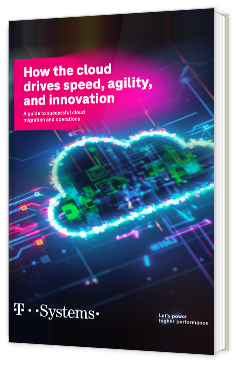

Votre guide de la migration et opération cloud réussies

"The cloud:
No longer if but when and how
The cloud empowers organizations to be more innovative, flexible, and simplify their IT operations. The COVID-19 pandemic also immediately showed the most well-known power of the public cloud: almost endless scalability. Suddenly we all worked from home and everything had to be scaled up to make this possible. Those who worked mainly in the cloud were less affected than those who still worked on their own dedicated infrastructure.
The issue of whether to bring core applications to the cloud often provokes lively discussions. Advocates and opponents can easily cite all kinds of advantages and disadvantages. A more fundamental conversation arises by rearticulating the question: why should applications not be able to go to the cloud?
Ultimately, every cloud-related question must come back to a single core principle: what value can it deliver to your organization? Simply transferring a classic application to the cloud often produces little benefit.
But there are caveats to successfully operating in the cloud. Without a carefully considered cloud strategy and good governance with FinOps, IT teams can burn through their annual IT budget in half the time. A strategy should include a plan to optimally support digitalization using legacy systems.
Many IT leaders are inhibited by the fact that they have several legacy systems. These systems are crucial for business continuity. They must always be available because, otherwise, factories or logistics processes will come to a standstill, resulting in significant losses.
There are tools in the cloud that enable organizations to leverage their reliable legacy systems – they needn’t jettison them. This may seem simple, but in practice, the implementation of such a strategy is quite complex. A cloud strategy only works if the differences between the clouds and the applications used are well integrated. A good foundation is therefore essential.
Almost all applications and IT landscapes can and ultimately will go to a cloud. The available transition and migration methods offer many options. Less clear is what to bring to which cloud. The differences in the cloud only make the discussion more complex. Consequently, companies often postpone large-scale migrations because it is unclear to them what the cloud can offer. This is a shame because delaying a cloud migration can be harmful to your business.
The application landscape can also be an obstacle to cloud migration. For example, what if the applications to be migrated depended on the underlying hardware? Because, in the cloud you don’t have access to the hardware.
And how do you secure your cloud environment? Many companies are paying insufficient attention to the topic of cloud security in their migration projects. One common reason for this is sheer overload: The multitude of products and providers makes choosing the right solution complex."